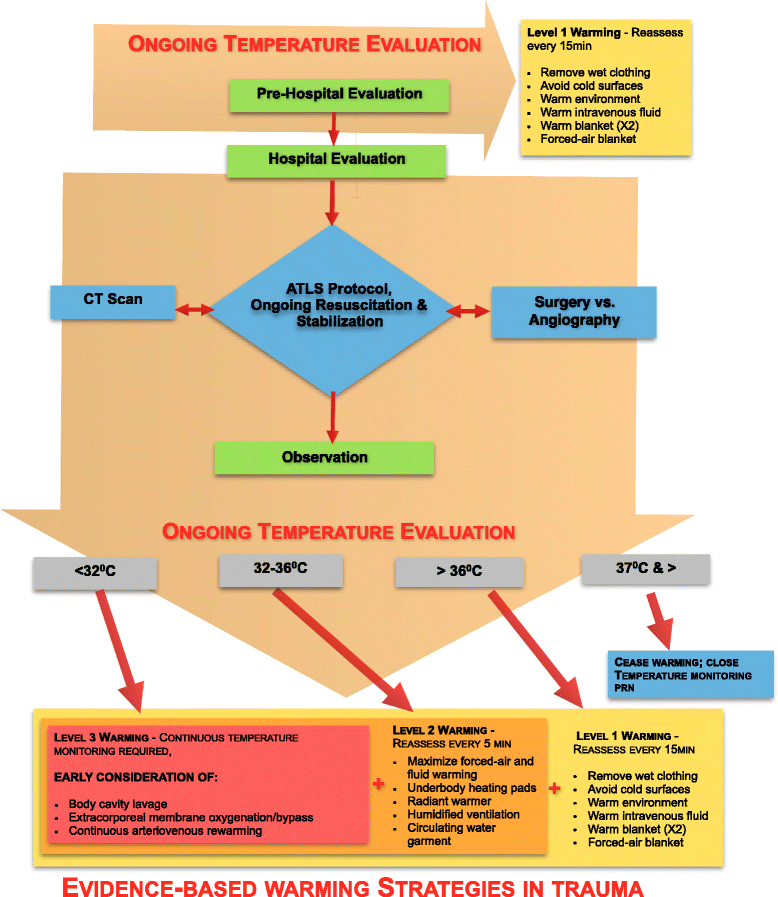A recommended early goal-directed management guideline for the prevention of hypothermia-related transfusion, morbidity, and mortality in severely injured trauma patients
- PMID: 27095272
- PMCID: PMC4837515
- DOI: 10.1186/s13054-016-1271-z
A recommended early goal-directed management guideline for the prevention of hypothermia-related transfusion, morbidity, and mortality in severely injured trauma patients
Abstract
Hypothermia is present in up to two-thirds of patients with severe injury, although it is often disregarded during the initial resuscitation. Studies have revealed that hypothermia is associated with mortality in a large percentage of trauma cases when the patient's temperature is below 32 °C. Risk factors include the severity of injury, wet clothing, low transport unit temperature, use of anesthesia, and prolonged surgery. Fortunately, associated coagulation disorders have been shown to completely resolve with aggressive warming. Selected passive and active warming techniques can be applied in damage control resuscitation. While treatment guidelines exist for acidosis and bleeding, there is no evidence-based approach to managing hypothermia in trauma patients. We synthesized a goal-directed algorithm for warming the severely injured patient that can be directly incorporated into current Advanced Trauma Life Support guidelines. This involves the early use of warming blankets and removal of wet clothing in the prehospital phase followed by aggressive rewarming on arrival at the hospital if the patient's injuries require damage control therapy. Future research in hypothermia management should concentrate on applying this treatment algorithm and should evaluate its influence on patient outcomes. This treatment strategy may help to reduce blood loss and improve morbidity and mortality in this population of patients.
Figures
Comment in
-
An additional method for the prevention of hypothermia in severely injured trauma patients.Crit Care. 2016 Jul 8;20(1):198. doi: 10.1186/s13054-016-1365-7. Crit Care. 2016. PMID: 27389408 Free PMC article. No abstract available.
References
-
- Dembert ML, Dean LM, Noddin EM. Cold weather morbidity among US Navy and Marine Corps personnel. Mil Med. 1981;146:771–5. - PubMed
Publication types
MeSH terms
LinkOut - more resources
Full Text Sources
Other Literature Sources
Medical


